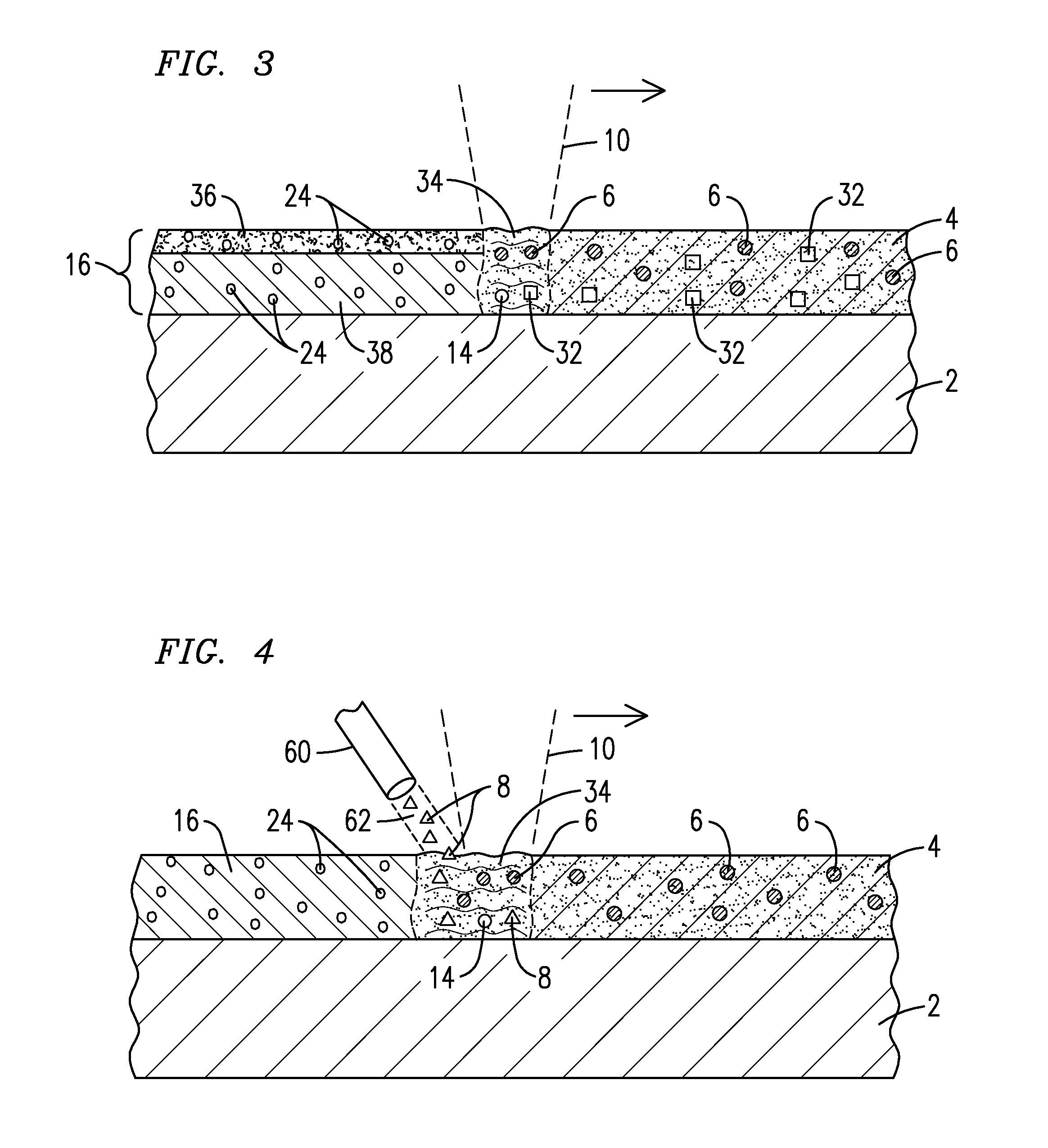Method of inducing porous structures in laser-deposited coatings
a technology of laser-deposited coatings and porous structures, which is applied in the field of material technology, can solve the problems of disadvantageous use of such layers in terms of complexity and cost of their production, and the limiting feature of heat resistance of modern gas turbine engines
- Summary
- Abstract
- Description
- Claims
- Application Information
AI Technical Summary
Benefits of technology
Problems solved by technology
Method used
Image
Examples
Embodiment Construction
[0015]The present inventors have discovered methods for coating substrates, including superalloy substrates, with metallic and / or ceramic materials to produce porous (void-containing) coatings having improved properties such as reduced thermal conductivity, increased adherence, and greater resistance to cracking, impact damage and spalling. The present inventors have innovatively developed a combination of steps for manufacturing coated materials having improved thermo-protective properties as well as coated materials produced using simpler coating and bonding techniques amenable to a variety of high-temperature applications and applications requiring robust bonding between layers.
[0016]One embodiment of the present invention is a method involving the application of an energy beam to a powdered material in contact with a substrate, such that a gas-generating agent undergoes a chemical reaction to produce a gaseous substance that imparts voids (pores) to a resulting coating adhered t...
PUM
| Property | Measurement | Unit |
|---|---|---|
| Time | aaaaa | aaaaa |
| Electrical resistance | aaaaa | aaaaa |
| Mechanical properties | aaaaa | aaaaa |
Abstract
Description
Claims
Application Information
 Login to View More
Login to View More - R&D
- Intellectual Property
- Life Sciences
- Materials
- Tech Scout
- Unparalleled Data Quality
- Higher Quality Content
- 60% Fewer Hallucinations
Browse by: Latest US Patents, China's latest patents, Technical Efficacy Thesaurus, Application Domain, Technology Topic, Popular Technical Reports.
© 2025 PatSnap. All rights reserved.Legal|Privacy policy|Modern Slavery Act Transparency Statement|Sitemap|About US| Contact US: help@patsnap.com



